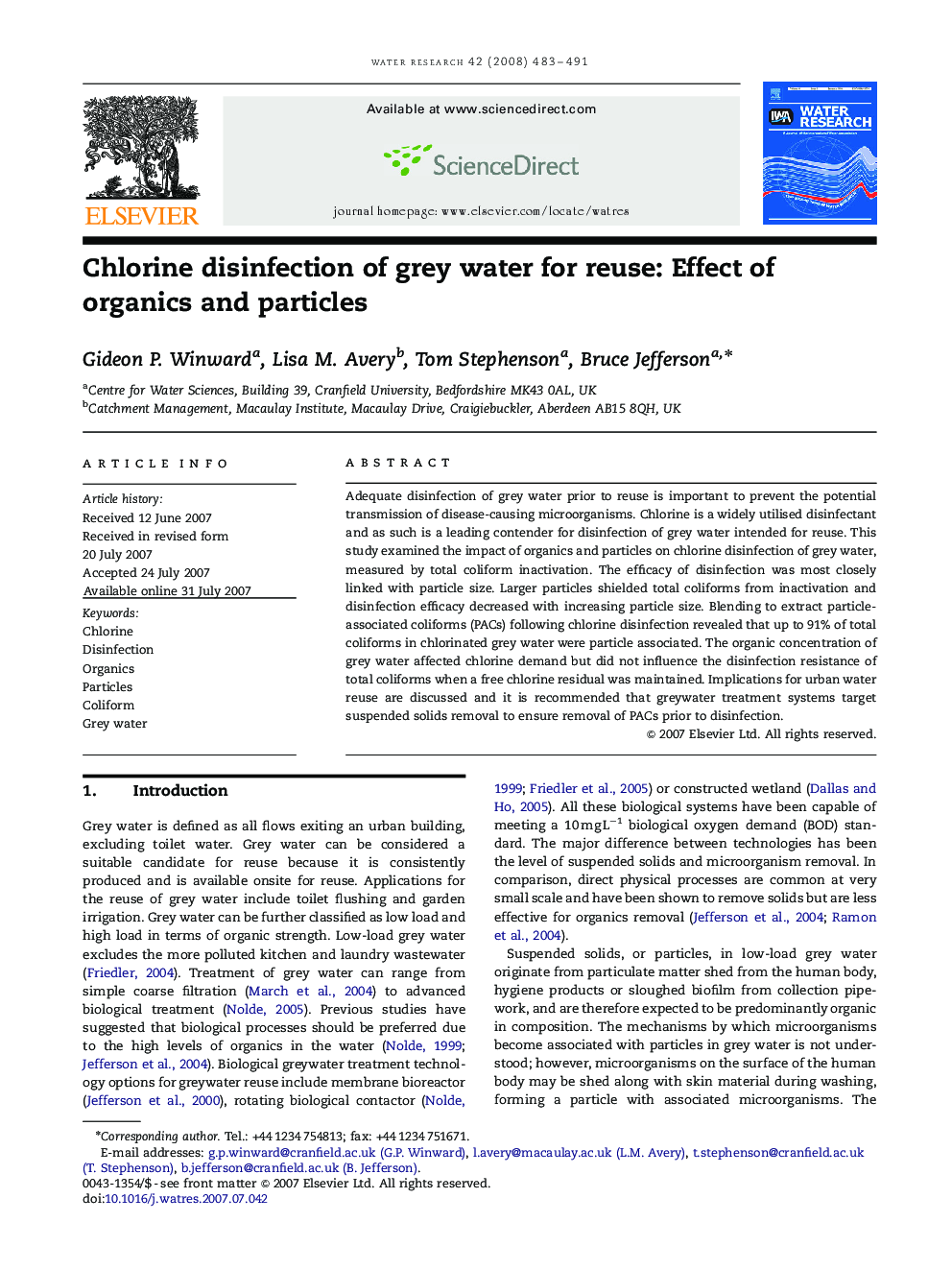| کد مقاله | کد نشریه | سال انتشار | مقاله انگلیسی | نسخه تمام متن |
|---|---|---|---|---|
| 4485783 | 1623125 | 2008 | 9 صفحه PDF | دانلود رایگان |

Adequate disinfection of grey water prior to reuse is important to prevent the potential transmission of disease-causing microorganisms. Chlorine is a widely utilised disinfectant and as such is a leading contender for disinfection of grey water intended for reuse. This study examined the impact of organics and particles on chlorine disinfection of grey water, measured by total coliform inactivation. The efficacy of disinfection was most closely linked with particle size. Larger particles shielded total coliforms from inactivation and disinfection efficacy decreased with increasing particle size. Blending to extract particle-associated coliforms (PACs) following chlorine disinfection revealed that up to 91% of total coliforms in chlorinated grey water were particle associated. The organic concentration of grey water affected chlorine demand but did not influence the disinfection resistance of total coliforms when a free chlorine residual was maintained. Implications for urban water reuse are discussed and it is recommended that greywater treatment systems target suspended solids removal to ensure removal of PACs prior to disinfection.
Journal: Water Research - Volume 42, Issues 1–2, January 2008, Pages 483–491